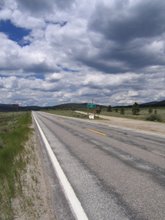Sacred Text: Excerpts from John 20
It’s been a week and a half since Easter, and the urgency, the activity, the fear of Holy Week—in which Jesus was captured and executed—this activity is passed. The surprise of Easter has also passed—the discovery of the empty tomb, the wonderment, the rejoicing… That too is now passed, and we are left wondering what do we do after Easter?
The story of Thomas provides a realistic model of how we might continue in faith in a world full of doubt. It may seem a bit odd to think of Thomas as a model—growing p, calling someone a “doubting Thomas” was a way of dismissing them as overly skeptical. It comes from this story—Thomas wasn’t with the group when Jesus originally appeared, and claims “Unless I see the mark of the nails in his hands…. I will not believe”.
Maybe Thomas is the realist—I certainly see myself in his character. Thomas knew Jesus was taken, and killed. He had been dead for three days. Peter and some of the disciples saw the empty tomb, but what a tragedy: they didn’t understand, says the gospel of John; someone had taken Jesus body. There’s the story of Mary, but this is only second hand. What is Thomas to believe: Jesus is dead, not alive.
Thomas wasn’t with the other disciples that first evening. The others were gathered, doors locked for fear of their persecutors. Jesus appeared to them then. But Thomas wasn’t there when Jesus came. The story doesn’t tell us why—was it too painful to be gathered together in the memory of their dead teacher? Perhaps Thomas had drawn away to be alone, to think, or to pray. Or perhaps, even, to despair.
Thomas wants proof that such a miraculous event could actually happen. Thomas does not want to succumb to wishful thinking. He rejoins the disciples. And after what must have been a long week, Jesus came among them again and Thomas answers with joy “My Lord and my God!”
We often draw on second-hand stories, stories from the Bible that teach us about God, stories from each other, when we’ve seen God in our own lives. But sometimes, we need more—and we rightly cry out to God “I want to see you in the flesh!” We may not be given an apparition of Jesus saying “Behold”—but I do think that if we look hard enough we can see God in our lives.
I said before that Thomas might provide a realistic model of faith. If he makes the most famous statement of doubt in the Bible, he also makes what I think is one of the most powerful statements of faith. A few chapters earlier in John, Jesus is going to back to Judea because Lazarus has died. “But haven’t they just tried to stone you there?” the disciples ask. But Thomas says, “Let us also go, that we may die with him”.
Thomas rightly recognized that following Jesus was a dangerous enterprise. But he believed in Jesus’ message, he loved his teacher so that he would follow him, even unto death. Again this was no wishful thinking faith—that everything would be fine.
This was true faith, true trust in following God even unto the valley of the shadow of death.
And so may we live in faith like Thomas, in a world in which we are so not sure that everything will work out right, in a world in which we have to keep going, even if we don’t have the benefit of a tangible presence of God. Let us seek God, and walk confidently with God even into the darkness.
Monday, May 25, 2009
Subscribe to:
Post Comments (Atom)

No comments:
Post a Comment